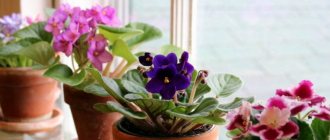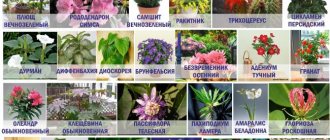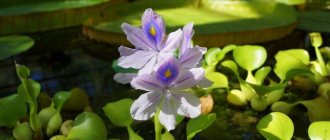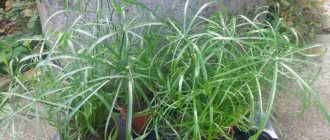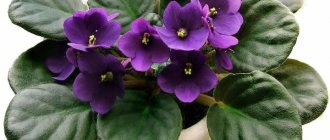For city dwellers, landscaping a loggia or balcony is often the only opportunity to get closer to nature - it is at the same time decoration, a way to lift their spirits, relaxation and easy work with the soil. In order for plants to bring joy, they need to be chosen correctly, for example, flowers for the sunny side should not only be light-loving, but also withstand direct sunlight.
Zinnia
Bright zinnia attracts attention immediately. This flower is very hardy and resilient. He looks very elegant and at the same time modest. Ease of care and a huge variety of varieties and colors contribute to the fact that many summer residents choose this plant for their flower beds. Lush zinnia inflorescences can be used to decorate a border, plant them along a path, or simply in a flower garden.
What plants should be planted on a southern and hot loggia?
Due to the constant heat and high levels of ultraviolet radiation on the southern balcony, flowers for it should be selected according to certain requirements:
- they tolerate the scorching sun well (for example, those native to the desert or savannah);
- develop normally in a cramped pot or flowerpot;
- can survive a couple of days in dry soil (in case it is not possible to water on time and the moisture dries out quickly);
- unpretentious;
- for open balconies you need to choose small plants with short stems, otherwise the wind will break them.
Pelargonium
This spectacular plant is very light-loving; it is usually placed on the south side of the house. With a lack of light, the stems become elongated and growth slows down. Pelargonium is sensitive to stagnant air, so in summer it is necessary to take it out onto the balcony.
The flower is watered three days after the top layer of soil has dried. In winter, the soil is moistened even less so as not to provoke root diseases.
Aloe vera
By placing aloe vera in your apartment, you will not only decorate your windowsill, but also receive valuable material for preparing a growth stimulant. This plant prefers dry, warm air and temperatures of 18-25°C in summer and 12-18°C in winter. When caring for this plant, it is very important to follow a watering schedule - aloe vera does not like waterlogging. If you want to remove accumulated dirt from the leaves, use a damp cloth.
Light : direct sunlight, openwork light.
Watering : moderate.
Hibiscus chinensis (Chinese rose)
If you are faced with the task of “greening” a French window facing south, you will not find a better plant than hibiscus. True, you should always remember that the Chinese rose grows very quickly and turns into a spreading tree.
To increase the chances of flowering, in winter it is advisable to move the plant to a room with an air temperature of 14-16°C. Hibiscus blooms on young shoots, so the plant should be pruned in a timely manner. The shoots that grow parallel to the main trunk (the so-called “tops”), as well as the branches that grow inside the crown, are necessarily sent “under the knife.”
Light : direct sunlight.
Watering : frequent, regular spraying is required.
Sansevieria three-lane (pike tail, “mother-in-law’s tongue”)
A unique plant that can be grown with equal success on both southern and northern windows. It is almost impossible to destroy Sansevieria. Like all succulents, piketail prefers dry air and infrequent watering, but even if you accidentally flood it, it will recover very quickly.
Light : from shade to direct sunlight (in especially hot summers, it is better to slightly shade the plant).
Watering : no more than once a week, in winter once or twice a month.
According to a NASA Clean Air study, Sansevieria can actively absorb a range of toxic substances from the air, releasing oxygen in the process. Since these processes most actively occur at night, it is recommended to keep the “pike tail” in bedrooms.
Palms and large trees
Dracaena
Indoor plants in bottles and jars: how to grow plants in water
A charming fluffy palm with narrow, long leaves on a divided stem. It lives well away from windows, in dimly lit corners. The elegant appearance will help decorate any room: from an office to a bedroom or a nursery. For successful cultivation, ensure stable air humidity and a temperature of about 20-25 degrees.
Monstera
Just as ferns grow in our forests, monsters live in the tropical jungles - in the absolute absence of light, with very high humidity. When planting a monstera in your apartment, make sure that in the future you will have enough space for this powerful plant with huge dissected decorative leaves.
It grows quickly, occupying a large amount of space around - both in height and in width.
Important! Due to the size of the leaves, it is believed that at night the monstera absorbs oxygen and produces carbon dioxide - therefore it is not recommended to keep it in bedrooms. But it will be an excellent decor for a living room, dining room or office.
Alocasia
A decorative alternative to Monstera with large, but narrow, fleshy leaves, distinguished by light, noticeable wide veins (visible in the photo).
It is unpretentious to light, but it makes a lot of demands on other aspects of care: air humidity, soil, soil composition, temperature stability, a sustained dormant period until spring. Therefore, alocasia is considered a plant for experienced housewives, because without understanding the nuances of care, a flower can simply be destroyed.
Cycas drooping (cycas)
“Wild” cycads are large branching plants up to one and a half meters high. At home, cicadas rarely exceed a height of 50 cm, and side rosettes are rarely produced (if not never).
Cycas are very thermophilic, so even in winter they require a relatively high temperature of 16°C (not lower!), while many other desert inhabitants prefer a more modest 10-12°C.
fasteners for pvc pipes to the wall
Light : direct sunlight, light shading is acceptable in summer.
Watering : no earlier than the soil dries to 1/3 of the height of the pot.
Absolutely all parts of the plant are poisonous. Therefore, it is better not to grow cycads in apartments where children or pets are often present.
Features of growing flowers that love the sun
It is best to plant such flowers in ceramic pots. This container has improved air exchange and moisture evaporates faster. During evaporation, the soil temperature decreases significantly, which protects the roots from overheating and rotting.
Pots in which sun-loving crops are planted should be light in color. Dark color attracts sunlight and leads to overheating of the soil. The temperature on the windowsill of a south-facing window in summer can reach 40 degrees, and this should be taken into account when placing flowers on it. It is also not recommended to expose crops planted in a transparent flowerpot to the open sun.
Reference! If a plant looks lethargic and sick when grown on a windowsill, you should place it on a side table a little further from the window.
When caring for sun-loving plants, you should follow the following basic rules:
- provide the right amount of light;
- accustom to the sun (gradually);
- observe the irrigation regime;
- choose a suitable flowerpot.
Watering on the sunny side
When growing flowers on southern windows, you should remember the rapid evaporation of moisture from exposure to bright sunlight. Such crops require more frequent watering and spraying. It is better to spray flowers in the evening. This will prevent burns from occurring where water droplets have accumulated on the leaves.
It would be a good idea to place the pots on pallets with wet expanded clay. This will help maintain comfortable air humidity around the greenery.
Some types of flowers do not tolerate excess moisture. This should be taken into account when growing. For such crops, it is better to use soaking rather than root watering. This way the soil will absorb only the required amount of moisture.
Reference! Flower pots should have drainage holes to remove excess water.
To ensure the normal development of culture, you should follow simple rules:
- water the flower taking into account its characteristics;
- do not overwater succulents;
- do not allow the earthen clod to dry out too much;
- ensure regular spraying.
Which house flower is the most sun-tolerant?
Cacti and lithops are considered the undoubted leaders in terms of resistance to sunlight. They are able to develop in hot climates, do not suffer from bright light, and calmly tolerate periods of drought. In terms of endurance and resistance to negative external factors, only aloe and “mother-in-law’s tongue” are compared with cacti. These plants are able to calmly tolerate sunlight and heat, sudden drops in temperature, lack of moisture and drafts.
Reference! Plants that require large amounts of sunlight are called heliophytes.
Signs of sun-tolerant flowers:
- narrow, symmetrical leaves;
- on the surface of the leaf blade there is often a slight pubescence, which acts as protection against burns;
- short shoots.
Summer colors
Even in the hot summer, certain areas of the garden remain in the shade. The following mixborder diagram will tell you how to decorate a shaded area, and the characteristics given below will help you navigate the choice of shade-loving plants.
Equipment suitable for a shaded mixborder:
- Hosta plantain. White star flowers appear in August, but the beautiful leaves are of particular value.
- Hosta is white-edged. The shape of the flowers is similar to bells, the purple beauties are collected in a brush. You can enjoy the blooms in July.
The decorative properties and properties of bergenia are presented in the section on spring shade-loving plants.
Foxglove plays an accent role in the presented mixo-breeder scheme. The biennial plant reaches a height of 1.5 m. Large bells are collected in a spike. The shade-tolerant plant's shades range from white and yellow to red, purple and blurry patterns. You can admire the blooms all summer long, but you should be aware of the plant’s toxicity.
Lush hydrangea bushes are an excellent backdrop for shade-loving and shade-tolerant crops in the garden. The diagram shows two types - large-leaved and tree-like hydrangea. The plants bloom in summer and prefer the light shade of the garden. There are varieties with white, blue and pink flowering.
Codiaum variegated
Codiaeums are very heat-loving plants, which even during the dormant period, i.e. in winter, keep at a temperature of 16°C to 18°C.
If the plant does not have enough light, it will lose the bright color of its leaves, so you should never keep codiaum in the shade or partial shade. It prefers abundant watering, so if the earthen clod dries out completely, it can shed most of its leaves. Does not like excessively dry air and requires regular spraying, especially in winter. Once or twice a month, the plant can be given a shower.
Light : direct or slightly diffused sunlight.
Watering : regular, requires additional spraying.
Cyperus alternate-leaved (umbelliferous)
Cyperus is a very unpretentious plant that grows in nature near water. If you can provide it with a sufficient amount of moisture, then in just one and a half to two years the plant’s low umbrella will turn into a meter-long spreading bush.
When grown on a south-facing window, it requires regular spraying (to prevent leaf tips from drying out). Easily propagated both by apical shoots-umbrellas and by dividing the bush. Since the plant does not have a pronounced dormant period, it can be fed even in winter, although not more than once a month.
Light : direct or diffuse sunlight.
Watering : The roots should remain moist at all times.
Popular garden crops
Light-loving plants in the country are appropriate as vegetables, fruits, fruit trees and shrubs, as well as flowers.
Planted in the beds:
- potatoes;
- onion;
- tomatoes;
- cucumbers
Plants that bear fruit also reach for the sun:
- grape;
- strawberry;
- currant;
- gooseberry;
- Apple tree;
- apricot;
- pear;
- plum;
- peach.
The kingdom of all flowers gives the summer cottage the status of an Eden.
Ageratum
The lovely blue inflorescences of ageratum appear fluffy. Thanks to them, the plant became very popular. The culture is not too demanding to care for. Seedlings can be planted in the same container with calendula and marigolds.
If you want the ageratum to bloom magnificently, it needs to be watered, loosened and fed. Non-acidic, light soil with good drainage is suitable for perennials.
Cosmea
This flower is very unpretentious and simple. Having planted cosmos once, you no longer have to worry about planting every year: the flower reproduces well by self-seeding. It is picturesque, beautiful, and enlivens the planting of any crops in flower beds. The tall plant is visible from afar, and it blooms all summer. Cosmea is resistant to drought, bad weather and feels good under the scorching heat.
Mattiola
Mattiola feels wonderful on the sunny balcony. To get abundant flowering, it is better to choose tango, lapis lazuli and matthiola rosea varieties. Levy blooms for more than a month, exuding an amazing aroma.
Plants must be watered periodically, always at the root. Do this in two passes so that the soil is evenly saturated with moisture.
The optimal temperature for growing is about +20 degrees. The bushes need to ensure good air circulation.
Adaptation of heliophytes to unfavorable conditions
Home indoor flowers blooming all year round
The environment is not always kind to light-loving plants. An example of how a cherry tree disappears and does not bear fruit if it is in the shade will be familiar to many people who are at least a little involved in gardening. But first, the plant will do everything it can to get more light. This is mainly expressed in the increased surface area of the sheets and a deeper green tint, because it is known that dark colors absorb more energy from the sun's rays. Also, for the same purpose, the stems of plants are stretched, but at the same time they become more fragile, and the trees grow taller or can change their shape in order to receive more light.
Chlorophytum
A perennial herbaceous crop that is loved for its unpretentiousness. It was brought to our latitudes from Africa. It can live in any degree of lighting, is not afraid of direct rays, and does not suffer in the shade. But on the sunny side, the colors of the long narrow leaves will be more expressive.
Forgives forgetful owners missed watering. It can withstand temperatures down to 8 degrees without any problems. Does not require spraying. Chlorophytum is not only beautiful, but also has beneficial properties. It purifies the indoor air from harmful impurities and bacteria. It is easy to care for the flower; it reproduces by children, which quickly take root.
Sweet pea
The hanging crop, beloved by English gardeners, is often grown in hanging pots or containers on the balcony. Tall varieties of sweet peas require suitable support. Medium-sized species are also sometimes tied up.
When planting, sweet peas will prefer a mixture of sand, leaf soil and humus. The soil must be neutral. Sweet peas need to be watered deeply and frequently.
Aspidistra
An evergreen perennial plant with a well-developed superficial root system. Aspidistra leaves are large, thin, with a glossy surface, green or with small white spots or stripes. They grow directly from the root, forming a dense bush, which is why the flower is often called a “friendly family.” The flowers appear on the surface of the ground and are red-violet in color. The plant should moisten the soil moderately and fertilize once every 1–3 months, depending on the activity of its growth.
Aspidistra tolerates shade well; variegated species require more intense lighting. In summer, leaves should be protected from direct sunlight, which can cause burns. It is advisable to maintain the temperature in the room in autumn and winter at values from 15 to 17 ° C; if necessary, the flower can easily tolerate its decrease or increase. To maintain the beautiful appearance of the foliage, it is recommended to regularly spray the plant with a spray bottle in warm weather.
Signs of lack of lighting
Flowering indoor plants: names, photos and descriptions (catalog)
In addition to the intensity of illumination, you also need to take into account the direction of the light. Phototropism is a term used to describe the reaction of flowers to the direction from which they receive artificial or natural light. It must come from above, otherwise the leaves will begin to turn towards the source, which will lead to deformation.
The following signs indicate a lack of lighting:
- Wide rows of leaves, large spaces between petioles. If you look at a flower from above, you can see the soil through the leaves and flowers. This means that some of the leaves either fell off or did not grow due to climatic conditions.
- The shoots are elongated, the petioles are too long, curved, and turned towards the light source.
- The leaves lose their variegated color. This is especially true for variegated forms. But even ordinary green leaves become discolored and may become covered with yellow or whitish spots. The tissues in the area of these spots are thin and lack moisture. In advanced cases, holes appear in their place. However, this may indicate not only a lack of light, but also sunburn.
- The leaves are fanned out, the stem is exposed, the plant bends towards the light source. In addition, it stretches upward and has a weakened, pale appearance. The lower part of the foliage crumbles very quickly, only the top remains healthy. With a lack of light, in most flowering species this phase occurs later, lasts less, or is absent altogether.
If the flower does not have enough lighting chronically, then defects appear. Total deficiency is reflected in young shoots and leaves - they grow thin, pale, and deformed.
To provide flowers with the necessary amount of light, artificial lighting methods are used - incandescent, fluorescent, and LED lamps. In recent years, phytolights have been gaining popularity. They have a full spectrum of radiation, which allows you to simultaneously organize illumination for different plant varieties. Moreover, the device is energy-saving, consumes a minimum of electricity, and operates in a wide range in the blue and red color zones.
Some light-loving indoor plants are not fussy to care for.
They are placed on the windowsill, excluding the north side, providing diffused light.
The scorching rays of the sun are also excluded.
You can determine that flowers do not have enough light by the following signs:
-growth stops;
— plant leaves (especially the lower ones) fall off, dry out, and turn yellow;
- new shoots are smaller in size;
- the stem becomes fragile, thin;
— a small number of buds are formed during flowering, they stop developing and fall off;
- those leaves that previously had a variegated color turn green.
These signals will alert you that the plant needs more light.
The most popular light-loving indoor plants are Kalanchoe, begonia, and geranium. They require minimal care. Therefore, they can often be found not only in homes, but also in offices.
Kalanchoe is a medicinal houseplant. Homeland - South America. It blooms profusely all year round. The flowers of the plant come in a wide variety of shades.
It can be grown both in an apartment and in a country house. It is not contraindicated to place pots of Kalanchoe in children's bedrooms.
It perfectly purifies the air, strengthens the human immune system, is able to restore strength, and has antiviral activity. If you place the Kalanchoe on the south side, cover it with paper in the heat from the sun.
Water sparingly when the soil dries out. If you overwater it, the plant will rot. Twice a month you should feed it with mineral fertilizers (in summer). If the plant is too elongated, shorten it by cutting off the top with 3-5 leaves and root it.
Begonia is an ornamental flowering plant. Pleases with flowering for several months. Leaves of different colors.
Light-loving indoor plant - requires a lighted place, high air humidity. Protect from direct sunlight - otherwise burns will occur.
Doesn't like drafts. Watering is moderate. Only settled water. It is better to feed during the flowering period (2 times a month). Propagated by cuttings or seeds.
The most common indoor plant on the windowsill is geranium (pelargonium). Homeland - South Africa. Regular watering is required.
Excess water must be drained from the pan when the water passes through the soil. It is advisable to feed with fertilizers that contain ash.
When the flowers have faded, cut off the shoots. Light-loving indoor plants also include: ficus, indoor rose, fuchsia. But they require more care and attention.




